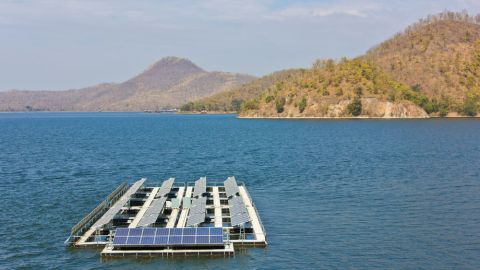Renewable Energy in 50 Years: 3 Predictions

Humans have the unique talent to imagine the prospective in rich, complete detail. Futurists from past generations foretold a global paradigm shift, buttressed by interconnectivity, digitization, seamless space travel, and policemen equipped with surgically fastened, bat-like wings.
Granted, it’s an imperfect science.
Sometimes we dream up winged peacekeepers, but other times, we prove ourselves precocious. In the world of sustainability, we’re always looking onward and upward to the next big development which will finally strip us of our dependence on coal and oil. While we’re not quite there yet, much of what we’ve predicted for green energy has actually hit somewhere close to the mark. International reliance on dirty energy is subsiding, solar power is becoming less expensive (some say even cheaper than coal) and, in all, renewable energy is becoming more accessible.
It’s kinda what we thought would happen.
So, why not go ahead and take a whack at predicting the status of the energy industry in, say, 40 or 50 years from now? Here’s what our top scientists and field leaders seem to think:
Solar Power will prevail.
According to a report from the International Energy Agency (IEA), solar power could very well be responsible for over a third of our energy supply by the year 2060. The sun’s rays offer a ductile, easily-to-collect source of energy, so it shouldn’t come as a shock to see solar power leading the pack for renewables. What is a shock, however, is that the notably conservative IEA made the prediction. If they’re predicting over a third, who’s to say we can’t reach a half, or even two thirds in solar contribution?
Europe could spearhead the charge.
Well, really, we’re all a big part of the mix if we expect an international redressing of our energy supply. However, Europe has set its goals as high as or higher than any other country for the next few decades. Under its current agenda, the European Renewable Energy Council has predicted an entirely renewable energy supply for European Union residents by the year 2050 (or earlier). The organization is relying on a culmination of elements, including increased investment, cheaper materials and increased accessibility to renewables for the typical consumer. Sound familiar? Seems doable.
The world will run on 100% sustainable energy by 2050.
Or 95%. Or 80%. It depends on who you ask. The point is, we’re going to be a heck of a lot closer to complete sustainability then than we are now. And that’s something worth celebrating. What all these reports of augmented renewables have in common is their reliance on a smarter, more earth conscious society. If we’re to get anywhere in the next half century, it has to be through our own doing. From the scientists at the tippy top of the production line all the way down to the consumers, it’s our privilege to be stewards for renewable energy.





